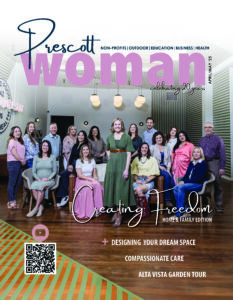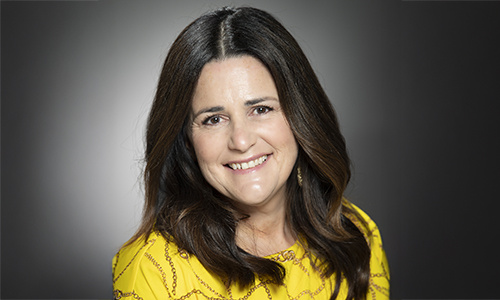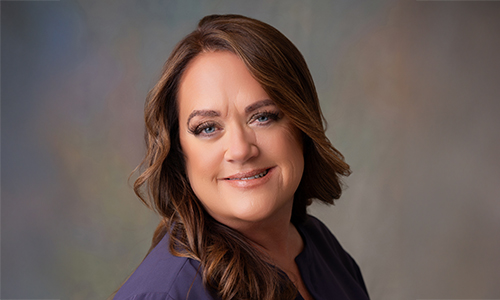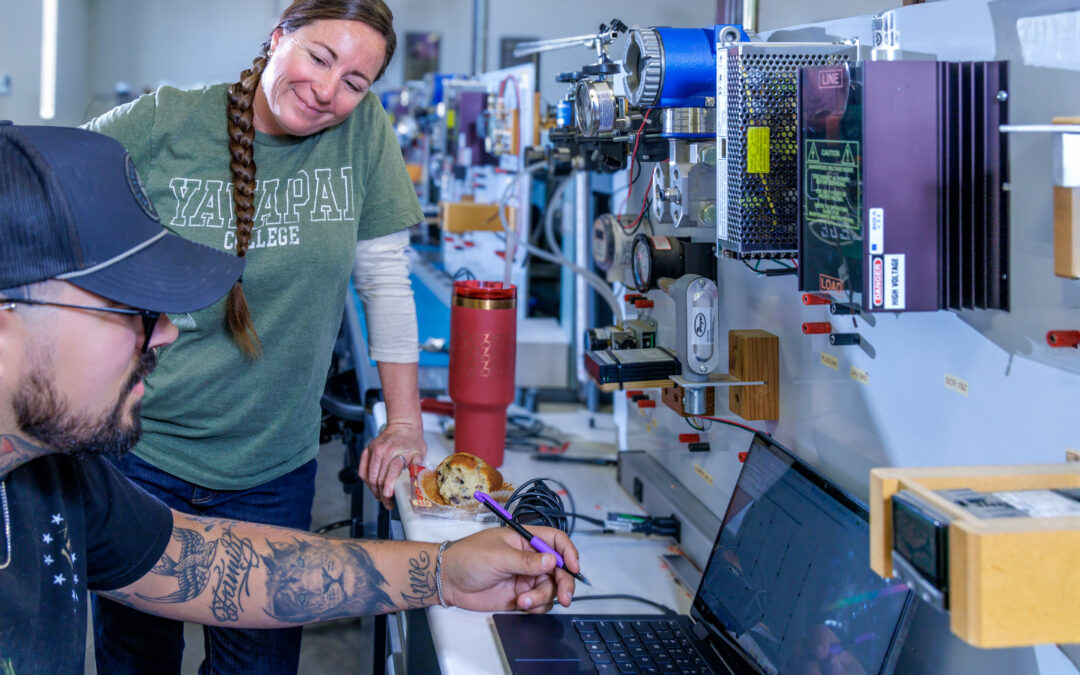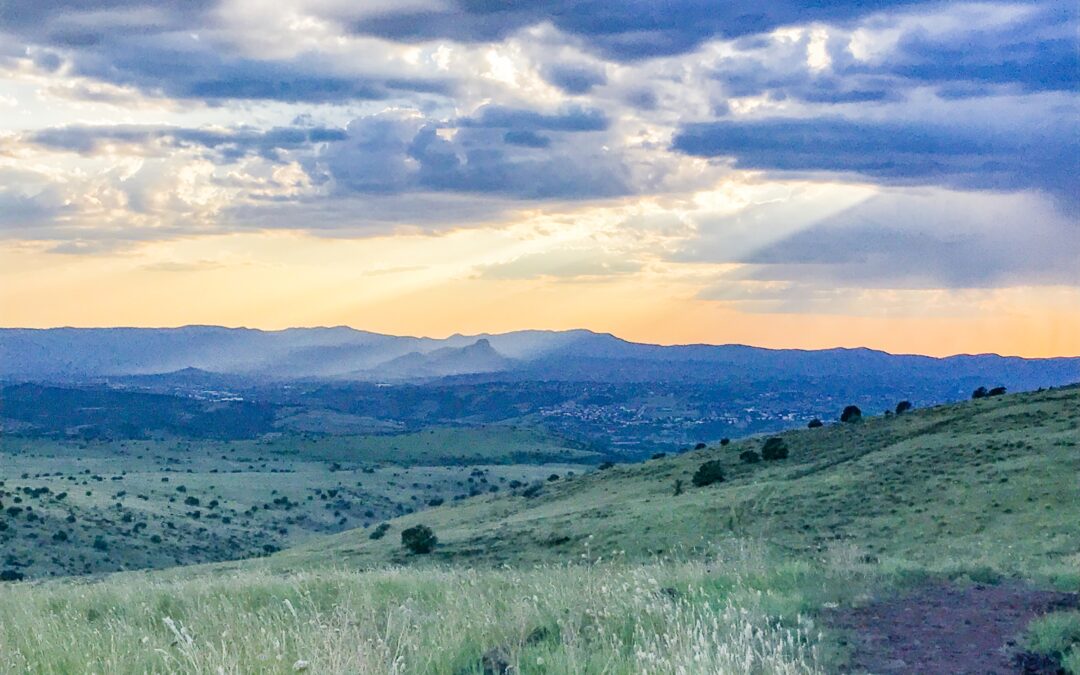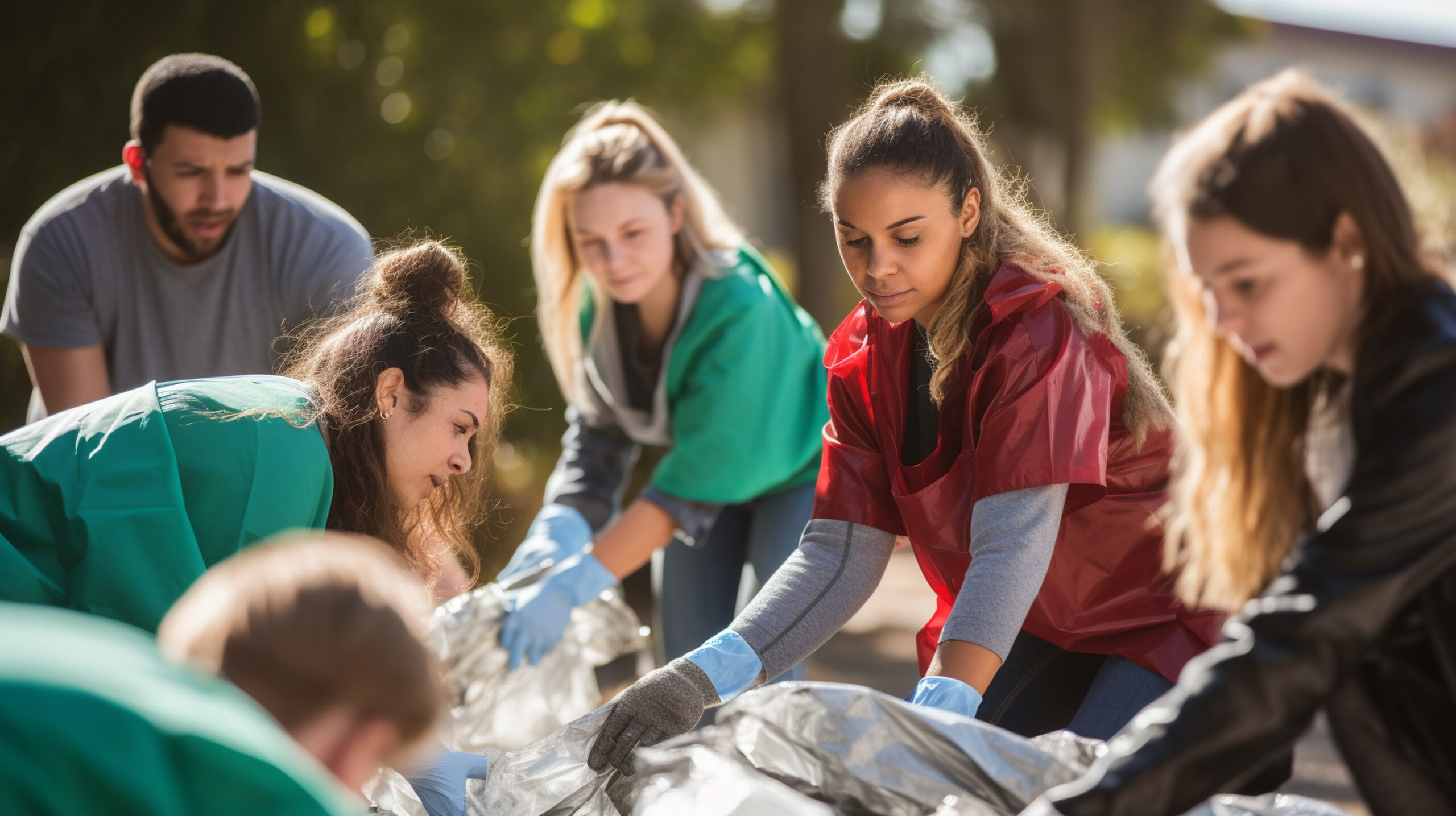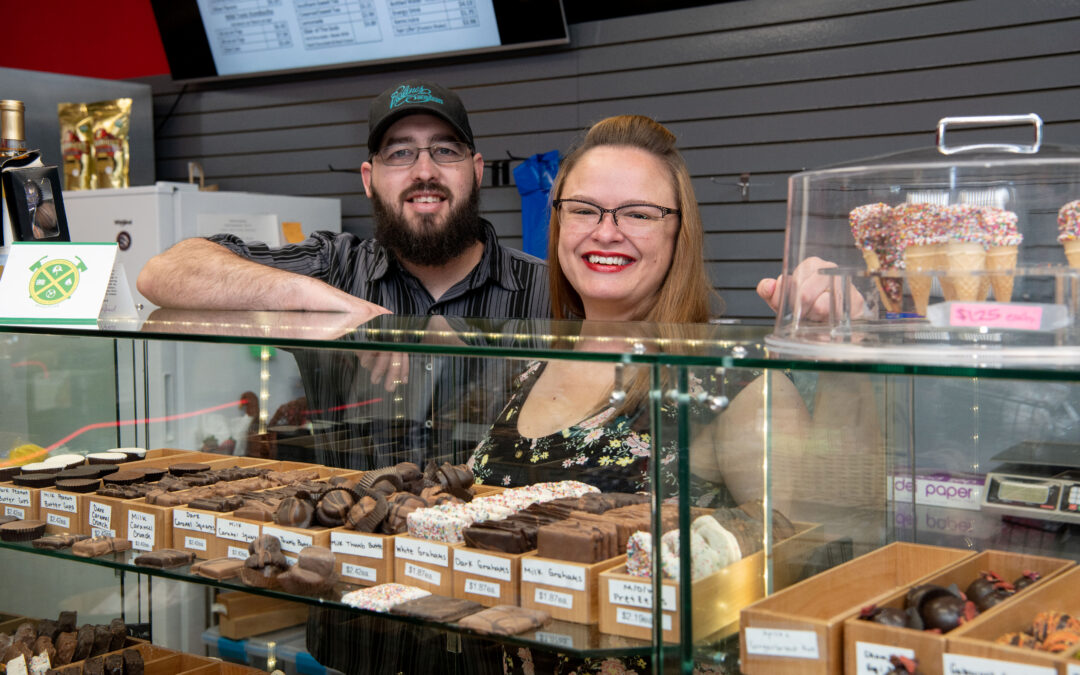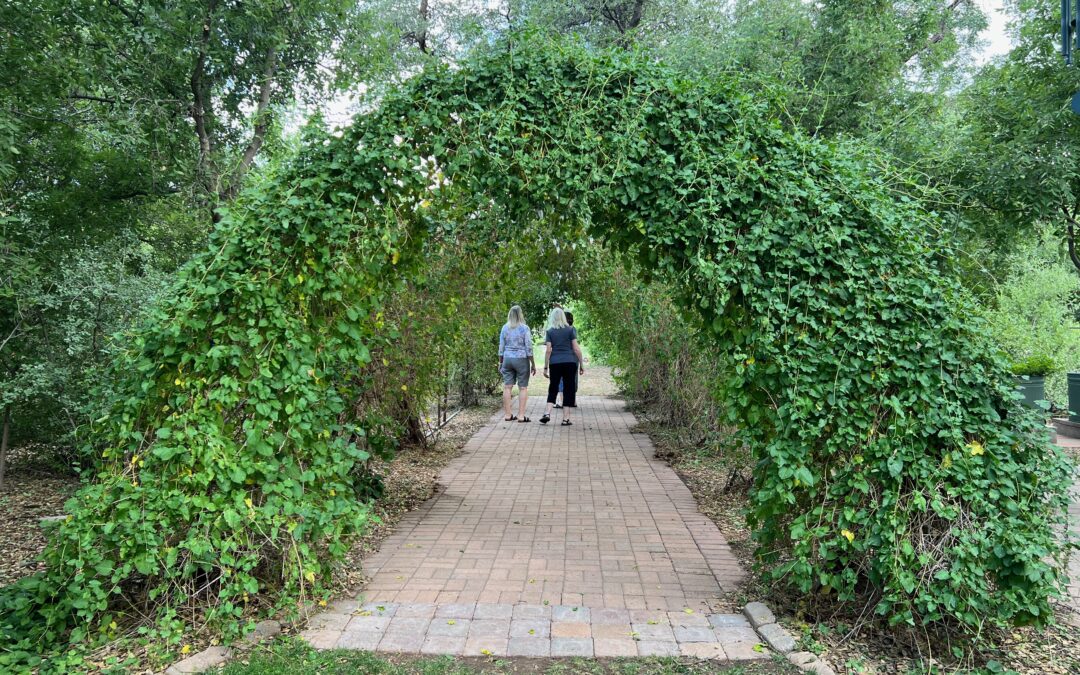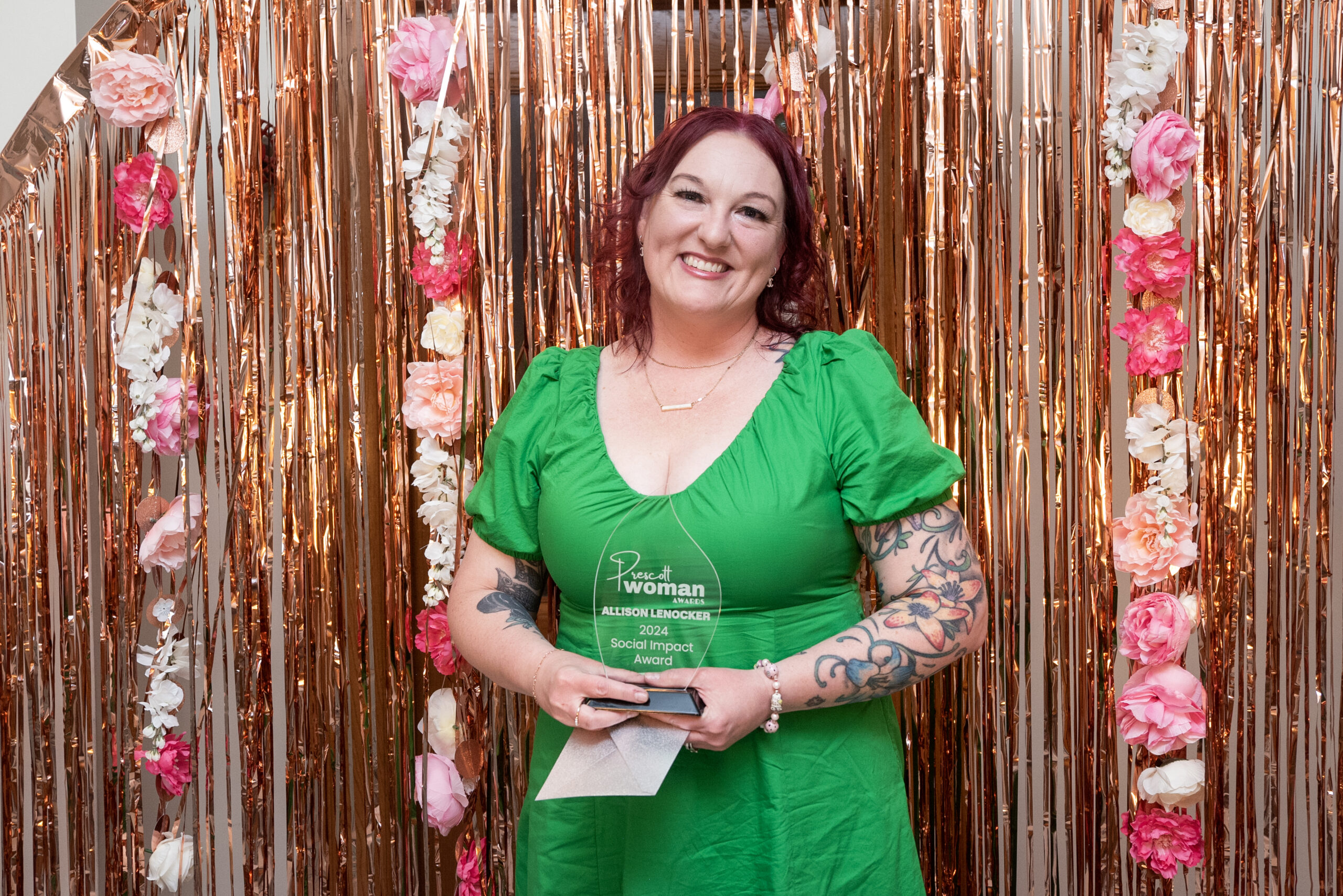Prescott Western Heritage Foundation Pays Homage to Pioneer Women During Reenactment Event
By Brenda Cusick
A nervous twitter ran through the sold-out crowd at the Western Heritage Center on Whiskey Row as the reenactor put her hand on her gun belt, held out an enameled pot, and sauntered forward. Playing the role of the notorious stagecoach robber, Brenda Kruegar, also known as “Wildcat Pearl Hart,” during the “5 Amazing Prescott Pioneer Women” event, she proceeded to politely request, “yer jewels, your coins, yer watches,” and folks in the audience (who were in on the stunt) dropped large, clanking, fake coins noisily into the pot. “Pearl” then handed them back a couple of chocolate coins, “so they could buy their dinner,” just like the real criminal did one hundred years ago. Pearl Hart was just as bad at evading the law as she was at being a hard-hearted criminal. She and her man (Joe Boot) were caught soon after the stagecoach was robbed. Pearl was held in the Tucson jail, tried, and convicted. She was the only woman in the Yuma prison as she served out her sentence.
Life was not easy for women in the Arizona territory in the early twentieth century. Many turned to crime or prostitution because there were few other options.
In honor of Women’s Month (March), the Western Heritage Foundation put on an original play, with four local volunteers sharing stories in full, period-appropriate costumes. Most well-known, “Big Nose Kate” (reenacted by Barbara Rangel) told her story of being a child of affluence and how hard life became when her family had to leave the Court of the Emperor of Mexico after an uprising. She became an orphan in her early teens and suffered abuse before she ran away and started a new life using the only skills she had. Most people know her as the consort of “Doc” Holliday – but she has an important story all her own, including helping open the Prescott Pioneer Home to women!
Melissa Ruffner, a pioneer descendant, shared the story of her great aunt, Edith Ruffner, who faced hardships after her miner husband died shortly after the birth of their third child. She took a job as a bill collector, which required her to go into the seedy parts of Prescott, collecting debts due from unsavory characters to the O.K. Meat Market. Another local lady (the powerful Frances Munds) convinced Edith to run for County office; using the campaign slogan “Vote for the Miner’s Widow,” she became the first elected woman as Yavapai County Recorder.
The play’s final character, Kate T. Cory (reenacted by Brenda Cusick), was a well-bred socialite from New York City, famous in her own right for painting and teaching at university. She traveled west to join a new artist colony (like Taos or Santa Fe) near Flagstaff, but it never materialized. Undaunted, she rented an apartment at Old Oraibi (Third Mesa) and lived with the Hopi for almost ten years. Kate was instrumental in using her camera and colorful paintings to document the everyday life of the Hopi tribe. Upon moving to Prescott, she and Sharlot Hall became good friends. The Museum of Indigenous People was her brainchild, and her paintings and artifacts (including china designs and wallpaper samples), as well as other Smithsonian-quality paintings, can still be seen there. She was later commissioned by the State Senate to paint capital portraits. The department of the Interior and the Santa Fe Railroad also paid her to paint Western scenes, like Black Canyon before it was flooded by the Boulder Dam.
All in all, folks who. attended the play and learned how Prescott pioneer women were crafty, smart, and full of grit, surviving and even thriving in pre-statehood Arizona. We owe our pioneer ancestors a debt of gratitude for opening pathways for today’s ladies. Our lives as Prescott women are much better and easier because of their hard work and determination.
Learn more about the Prescott Western Heritage Foundation at https://www.visitwhc.org or call 928.910.2307.
